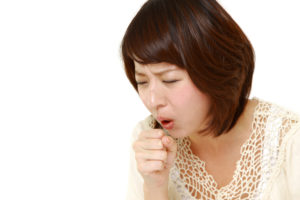Allergies in the Winter
 As Winter approaches, many individuals may begin to complain of allergy symptoms that are similar, if not identical to, the classic hay fever (i.e., allergic rhinitis) symptoms that most people associate with the Spring and/or Fall seasons. These symptoms may include runny nose, nasal congestion, post-nasal drop, sneezing, itchy throat, itchy eyes, watery eyes, redness of the eyes, snoring, sinus congestion, and/or sinus headaches. In certain susceptible patients with asthma, exacerbations may also occur and these individuals may also experience chest tightness, wheezing, coughing, and/or shortness of breath. In addition, the cold air that occurs during the Winter as well as upper respiratory infections (URI’s) that are more common during the Winter may also be triggers for worsening of one’s asthma.
As Winter approaches, many individuals may begin to complain of allergy symptoms that are similar, if not identical to, the classic hay fever (i.e., allergic rhinitis) symptoms that most people associate with the Spring and/or Fall seasons. These symptoms may include runny nose, nasal congestion, post-nasal drop, sneezing, itchy throat, itchy eyes, watery eyes, redness of the eyes, snoring, sinus congestion, and/or sinus headaches. In certain susceptible patients with asthma, exacerbations may also occur and these individuals may also experience chest tightness, wheezing, coughing, and/or shortness of breath. In addition, the cold air that occurs during the Winter as well as upper respiratory infections (URI’s) that are more common during the Winter may also be triggers for worsening of one’s asthma.
The most common and likely allergens to affect allergic individuals during the Winter are dust mites, molds, pets, and cockroaches. It should be noted that these allergens are perennial allergens as they can bother an allergic individual throughout the year.
Dust mites are the major component of dust and these mites are highly allergenic to certain individuals. They tend to live in bedding (i.e., pillows, mattresses, box springs), upholstered furniture, plush toys, and carpeting. It is important for dust-allergic patients to reduce their exposure to dust. This can be accomplished by covering their pillows, mattresses, and box springs with allergy proof encasings. These encasings help prevent someone from breathing in the dust mites thereby minimizing dust exposure.
Molds are ubiquitous and particularly bothersome and numerous in the Washington, DC, Northern Virginia, and Maryland metropolitan area. Contrary to popular belief, molds may exist in both humid and dry environments. Washington, DC was built on a swamp, so mold growth is inherent in this area. Molds tend to be more prevalent in kitchens, bathrooms, and basements. Molds often are difficult to eradicate. Although the exact numbers are debatable, it is generally recommended that the humidity in the home be set to less than 50% and the temperature should be set below 78°F in order to help prevent mold growth.
Pets are a common source of allergies in a home. Cats, dogs, and birds are the primary culprits for most families. The pet should be limited to certain areas of the home and it is generally recommended that the pet stay out of the bedroom of the affected allergic individual. In addition to being allergic to the pet itself by way of its dander and/or urine, a pet can bring in outdoor allergens via their coat after being outdoors. It is not uncommon for a dog or cat to transfer pollens on their fur from the outside to the inside of one’s house. A common misconception is that some dogs are hypoallergenic. Although not technically correct, there does appear to be less allergy symptoms for some individuals who have certain breeds of dogs that typically do not shed their coats (i.e., poodle, Portuguese Water Dog, Maltese).
The mere mention of cockroaches can get anyone up in arms, however, exposure to cockroaches is quite common, particularly in those living in the inner cities. In fact, it is fairly common trigger in inner city children with asthma. Cockroaches survive in almost any condition and are far more numerous that they might appear. There are more than 4,600 species of cockroaches around the world, although only about 30 species are associated with human habitats. It is said that for every cockroach seen in the home, there are many more hiding. If you have cockroaches, it is advisable to contact a pest-control company in order to eradicate the cockroaches from your home.
In addition to allergic rhinitis and asthma that can be adversely affected in the Winter by the factors mentioned above, the cold temperatures of the Winter may also cause or aggravate certain skin conditions. Hives (i.e., urticaria), generalized itching (i.e., pruritus), and swelling episodes (angioedema) are skin conditions that are diagnosed and treated by board certified allergists, like the ones at Black & Kletz Allergy. The conditions are called cold-induced urticaria, cold-induced pruritus, and cold-induced angioedema respectively. In these maladies, the exposure to the cold can cause hives, generalized itching or swelling. Rarely, the cold can cause a more severe reaction known as anaphylaxis which is very serious and potentially fatal. This condition is called cold-induced anaphylaxis. Individuals with this condition should carry a self-injectable epinephrine device (e.g., EpiPen, Auvi-Q, Adrenaclick) which is to be used if anaphylactic symptoms occur. One should always go to the closest emergency room after using a self-injectable epinephrine device as the device may only work for about 15-20 minutes.
If you suffer from allergic rhinitis, asthma, hives, generalized itching, swelling episodes, anaphylaxis, or cold-induced symptoms of any kind, the board certified allergy doctors at Black & Kletz Allergy have the expertise in order to diagnose and treat your condition. We treat both pediatric and adult patients and have offices in Washington, DC, McLean, VA (Tysons Corner, VA), and Manassas, VA. We have on-site parking at each location and both the Washington, DC and McLean, VA offices are Metro accessible. Please either call us for an appointment or you may alternatively click Request an Appointment and we will respond within 24 hours by the next business day. The allergy specialists at Black & Kletz Allergy have been treating allergy and asthma patients in the Washington, DC metro area for more than 50 years and we strive to provide state-of-the-art allergy care to the community.

 The vocal cords are V-shaped tissue folds within our voice box (i.e., larynx). The gap between the arms of the V is the opening into our windpipe (i.e., trachea). These are dynamic structures and move with the contraction and relaxation of the muscles attached to them. Normally the vocal cords open when we inhale and exhale, allowing the air to get in and out of lungs. They close while we eat, blocking food from entering into the windpipe. The vocal cords become narrowed when we speak. It is the vibration of the vocal cords that generates voice.
The vocal cords are V-shaped tissue folds within our voice box (i.e., larynx). The gap between the arms of the V is the opening into our windpipe (i.e., trachea). These are dynamic structures and move with the contraction and relaxation of the muscles attached to them. Normally the vocal cords open when we inhale and exhale, allowing the air to get in and out of lungs. They close while we eat, blocking food from entering into the windpipe. The vocal cords become narrowed when we speak. It is the vibration of the vocal cords that generates voice. Thanksgiving Day is usually a time when people gather with family and friends in order to be with each other, watch football, and of course, eat! Unless you or a family member has a
Thanksgiving Day is usually a time when people gather with family and friends in order to be with each other, watch football, and of course, eat! Unless you or a family member has a  Eosinophils are types of white blood cells which are part of our normal immune system. They tend to be elevated in allergic disorders. Eosinophils also play an important role in protecting us from certain infections and infestations from parasitic organisms.
Eosinophils are types of white blood cells which are part of our normal immune system. They tend to be elevated in allergic disorders. Eosinophils also play an important role in protecting us from certain infections and infestations from parasitic organisms. Sinus infections are quite common. They can vary in severity from being a nuisance on one end of the spectrum to severe and debilitating on the other end. The sinuses referred to in “sinus infections” are actually called “paranasal” sinuses because they are “near the nose.” Paranasal sinuses are cavities in the cranial and facial bones (i.e, skull) near the nose which help in filtering and moisturizing inhaled air that is inhaled through the nose. They also lighten the weight of the skull and are involved with voice resonance. There are 4 pairs of sinuses named for the corresponding bone that they are situated upon:
Sinus infections are quite common. They can vary in severity from being a nuisance on one end of the spectrum to severe and debilitating on the other end. The sinuses referred to in “sinus infections” are actually called “paranasal” sinuses because they are “near the nose.” Paranasal sinuses are cavities in the cranial and facial bones (i.e, skull) near the nose which help in filtering and moisturizing inhaled air that is inhaled through the nose. They also lighten the weight of the skull and are involved with voice resonance. There are 4 pairs of sinuses named for the corresponding bone that they are situated upon:
 Sleep apnea is a condition in which breathing is repeatedly interrupted which results in an individual to not get enough deep sleep that is required to rejuvenate the body. Excessive daytime sleepiness or falling asleep at inappropriate times are the classic symptoms of this disorder. It can be very serious and is a potentially fatal condition. Other common symptoms may include snoring, fatigue, decreased memory, decreased ability to learn, depression, decreased productivity at school and/or work, and a decreased quality of life. It is interesting to note that
Sleep apnea is a condition in which breathing is repeatedly interrupted which results in an individual to not get enough deep sleep that is required to rejuvenate the body. Excessive daytime sleepiness or falling asleep at inappropriate times are the classic symptoms of this disorder. It can be very serious and is a potentially fatal condition. Other common symptoms may include snoring, fatigue, decreased memory, decreased ability to learn, depression, decreased productivity at school and/or work, and a decreased quality of life. It is interesting to note that  Asthma
Asthma